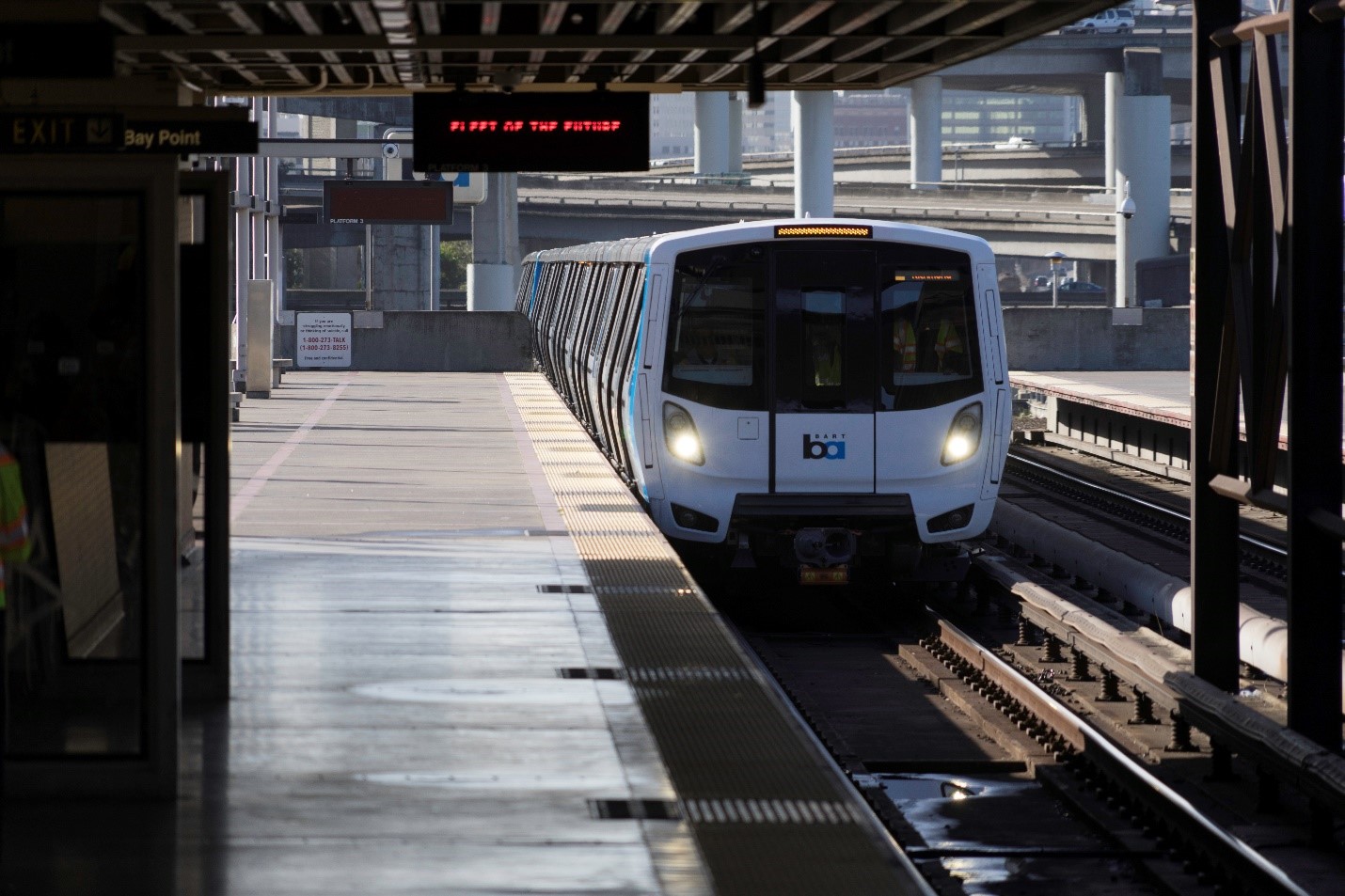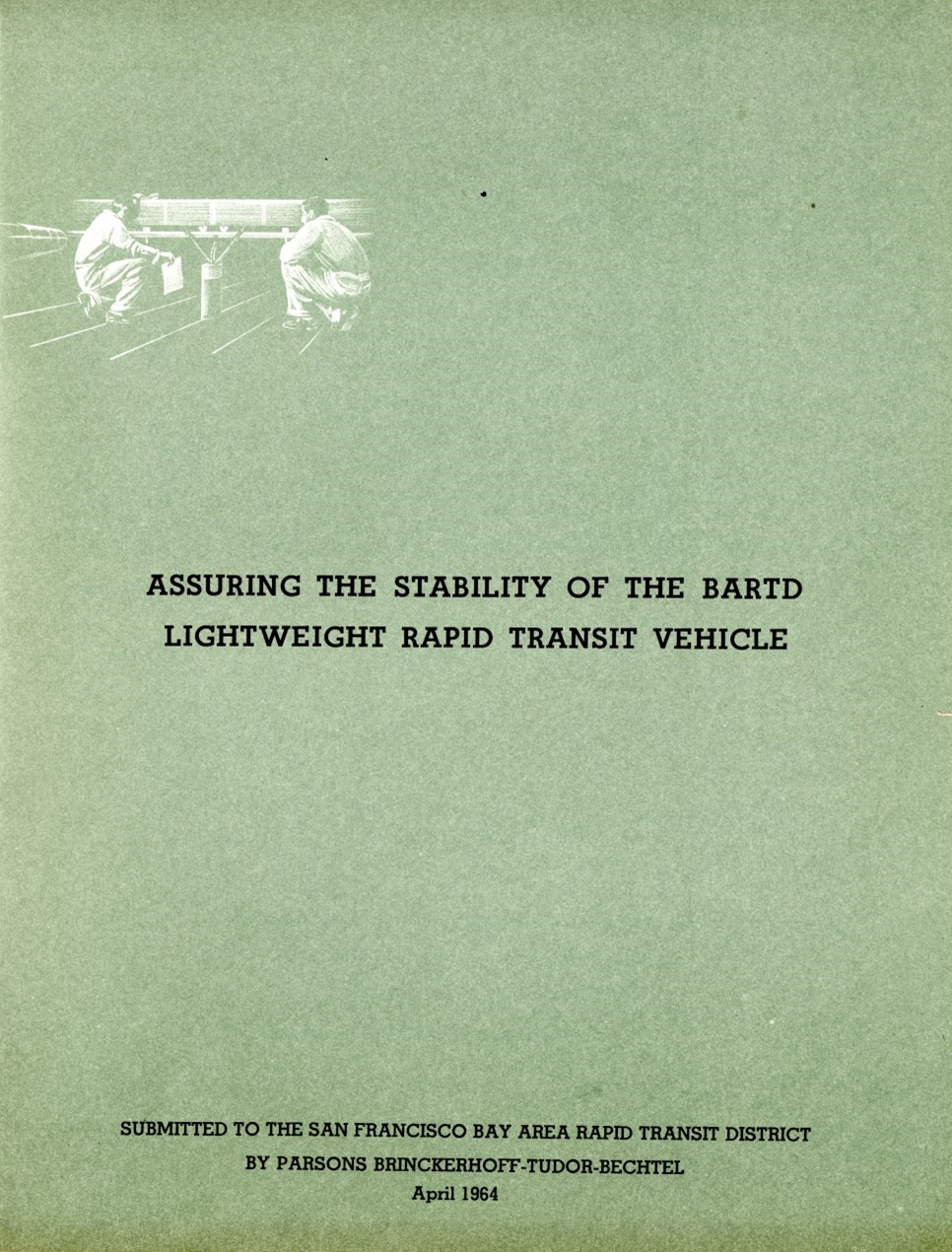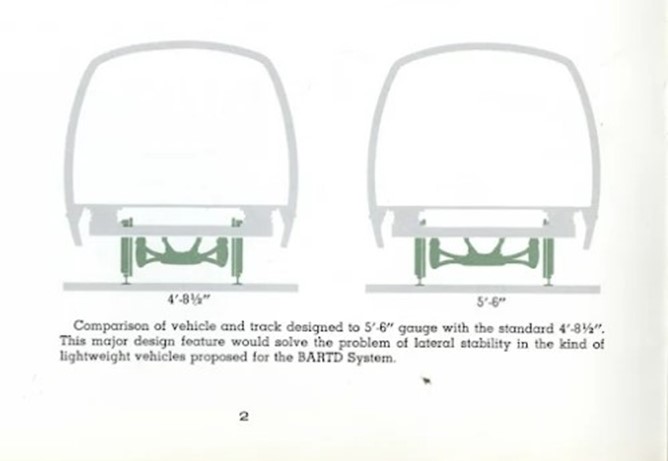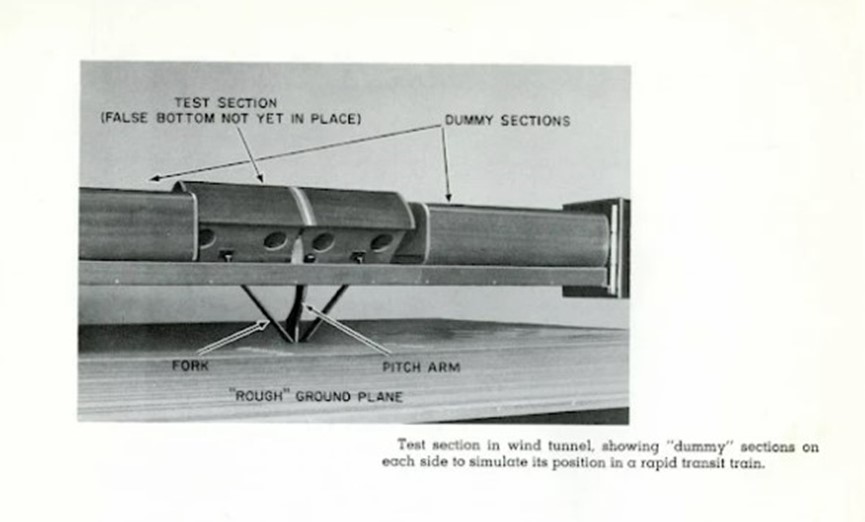50 years of BART: Why BART uses a nonstandard broad gauge

In celebration of BART’s 50th Anniversary this year, we’re looking back at the transit system’s five decades of service and innovation in a new series of stories. BART celebrates 50 years on Sept. 11, 2022.
For decades, rail aficionados have asked us: Why does BART use a nonstandard gauge, or track width?
The public has floated many theories. Some say the decision was political. Others say BART sought to keep freight or passenger rail cars off the system. The truth can be found in an unassuming-looking pamphlet from 1964, published nearly a decade before BART began passenger service.
Jay Bolcik, former BART Manager of Schedules and Service Planning, discovered a copy of the pamphlet in a box of BART ephemera tucked high away on a shelf of Prelinger Library in San Francisco. On its cover is an image of two men with a model BART train, with the title: “Assuring the Stability of the BARTD Lightweight Rapid Transit Vehicle.” (You can view a PDF of the entire pamphlet here.)

Bolcik said Prelinger Library cofounder Rick Prelinger found the pamphlet outside the Parsons Brinckerhoff-Tudor-Bechtel BART project office as the engineering consortium wound down operations in 1977. Prelinger has the curiosity and eye for recognizing potentially rare, tossed-out objects, Bolcik said.
The 13-page report – though brief and small in size – describes BART’s need for a wider gauge to keep its proposed ultra-lightweight cars on the tracks during high Bay Area wind events.
“It is now conclusive that the lateral stability of lightweight vehicles in the 800-pounds-per-linear-foot class can be assured through designs incorporating a 5’-6” gauge track,” the pamphlet says. “This is the most effective and most economical design measure by which the desired stability can be obtained.”
The standard rail gauge is exactly four-feet-and-eight-and-a-half inches. That gauge is used across the world to connect rail systems together across cities, regions, and nations. BART famously uses a much broader gauge, at five-feet-six-inches long, which has been nicknamed the “Indian gauge” as it’s common in the South Asian country.
Back in 1964, when the pamphlet was published, several countries’ railways were already using a nonstandard gauge -- either smaller or larger than the four-feet-and-eight-and-half inches -- including the Soviet Union, China, Argentina, India, and Spain, among others.

The pamphlet rests upon the conclusion that BART cars would be considerably more lightweight compared to similar vehicles. The original BART cars weighed 63,000 pounds when empty; by comparison, a New York City Subway car weighs 85,200 pounds -- 35% heavier.
BART intentionally designed the cars to be lightweight. “The lighter the vehicle, the easier it will be to move it from a standstill to a high speed and to decelerate it smoothly,” the report explains. The lightness of the cars also meant that acceleration and deceleration would require less power, and the cars could have a lighter propulsion unit and a smaller, quieter braking system.
With lightness comes certain challenges, however. On aerial trackways during high wind events – which the engineers knew were not uncommon in places such as Contra Costa County -- the light BART cars could potentially tip over, the engineers hypothesized. They were tasked with ensuring such a scenario never came to fruition – and to this day, fifty years after BART’s opening, it hasn’t.

Michael Healy, a BART historian and the former BART Director of Public Affairs, believes the use of the broad gauge “goes back to when BART was planned to go across the lower deck of the Golden Gate Bridge,” he told BART recently.
“High winds coming through the gate would have required more stability for the aluminum-shelled cars. Thus, the wide gauge, as I recall,” he said.
The pamphlet does not specify why only the wide gauge of five-feet-six inches was tested and not others. One possibility is that the broad gauge was among the more widely used gauges in other countries. Another theory is that complex calculations were required, thus limiting alternatives that could be practically evaluated at the time.
Where the pamphlet lacks insight into the engineers’ thought process, it makes up for in illustrative photographs and a careful unfurling of their scientific process.
After mathematical computations, the engineers found that the wide gauge “approach would assure the lateral stability of the desired lightweight vehicle more effectively and economically than any other design approach.” In other words, the cost savings in building a wider track would far surpass that of other suggested solutions. A wider gauge, the pamphlet notes, would also increase “riding comfort” by enabling the use of wider trains with more room for passengers.
To test their various solutions to the wind problem, engineers considered the size, shape, and weight of the car, in addition to the velocity of transverse wind, vertical acceleration forces, horizontal acceleration forces, and centrifugal forces. They then created a scale model of a BART car and placed it in a wind tunnel. In all, the engineers made 1,536 different calculations on a computer program developed specifically to process the data before testing those calculations in the tunnel.
The engineers’ conclusion: “After exploration of various alternatives, it has become apparent that a track gauge significantly wider than the standard 4’-8.5” offers the most practical possibility of obtaining the desired lateral stability.”